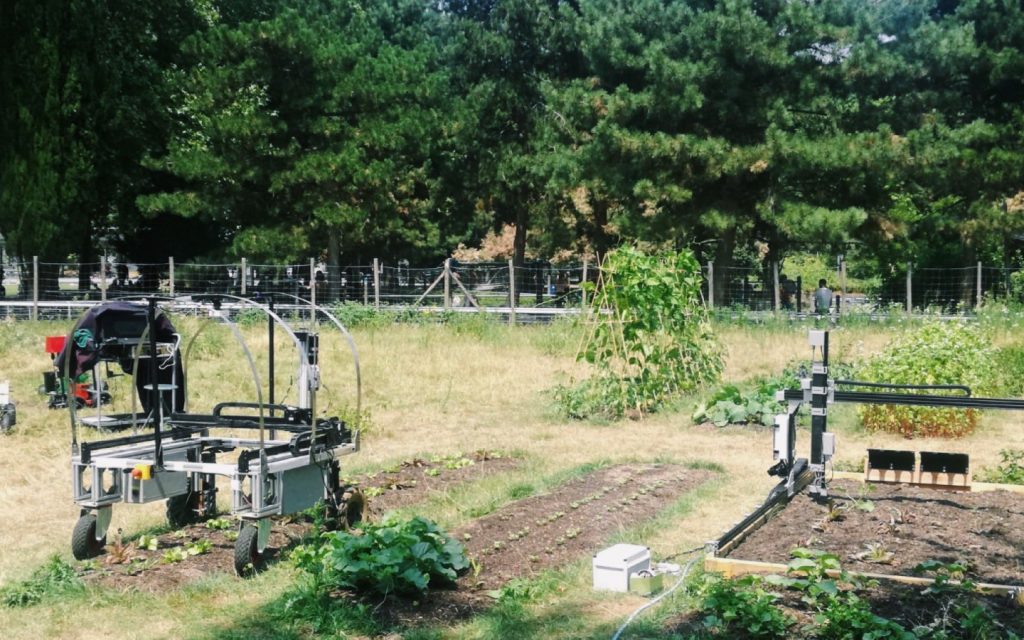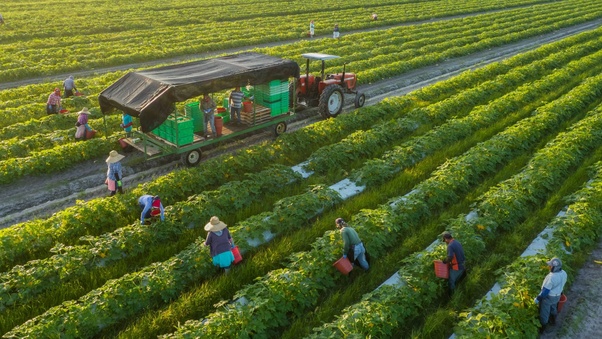ROMI stands for Robotics in Micro Farming
In countryside, peri-urban, and metropolitan regions
across Europe, a young generation of farmers is creating tiny inventive market gardens.
On tiny surfaces of fewer than 5 hectares, these farms
frequently cultivate polycultures of up to 100 distinct types every year.
Polyculture and organic microforms are proven to be
very profitable, ecological, and cost-effective, making them valuable
instruments for future agricultural growth.
ROMI is a four-year H2020 research project sponsored by
the European Union that aims to promote ecologically, localized, and
human-scale agriculture. It is creating a cost-effective, versatile platform
made up of robotic equipment, data, software, and shareable documentation to
assist agricultural communities in increasing productivity and improving
working conditions. A land-based robot, aerial robotic equipment such as a
suspended cable box for polytunnels, a drone for crop management, and a 3D
scanner for quantitative traits in indoor and outdoor contexts are all being
developed by ROMI.
In
Europe, small organic farms are scalable enterprises.
A notable tendency in the growth of farms in European
agricultural systems may be observed: on the one hand, a rising number of
larger farms, and on the other hand, a growing number of micro-farms (less than
5 ha). To date, small farms account for the great majority of European farms,
with 81.6 percent of EU-12 holdings having less than 5 ha of UAA, compared to
54.5 percent in EU-15. Micro-farms can be financially profitable: according to
recent research released by AgroParisTech (France), 1000 m2 of the planted area
can produce a crop worth 57,300 euros with 1600 hours of labor.
Micro-farms
enable local people to be fed.
We can expect a rise in agricultural output as a result
of technological advancement. Precision farming was valued at $2.8 billion in
2015, and it is predicted to expand at a rate of 12% each year. However, this innovation
now helps only a small number of bigger farms, further isolating micro-farms
that rely on conventional agricultural practices that require a lot of human
labor, resulting in physically demanding working conditions. Tractors are not a
feasible alternative in such tiny spaces because of incompatible technologies
of scale, and they are not equipped to manage the intricacies of many crop
varieties on the same field.
The goal is to make diversified cropping simpler and
eliminate manual labor so that micro-farms may expand, diversify their
operations, and remain viable. There is a pressing need to supply them with
low-cost, easy-to-use tools and solutions.
Robotics
facilitates the management of diversity.
The researchers behind ROMI think that computing and
mechatronics have advanced to the point where they are capable of managing the
intricate techniques of polyculture farming. In its third year of research,
ROMI is adapting and expanding cutting-edge land-based and air-borne monitoring
technologies, with the goal of releasing a lightweight, low-cost, and adaptable
robotics platform that is modular, inexpensive, and simple to use.
Sony's land robot can both monitor and work on crops.
These robots, when combined with aerial robotics, such as the cable box and
drone devised by the Institute for Advanced Architecture (IAAC) and the Noumena
team, form a forum capable of collecting a precise multi-scale picture of crop
progress, from collective sample plants to an overall context of the cultivated
landscape.
By integrating high-throughput data from the robot's
cameras with computer models of plant growth, the research is exploring a novel
technique for monitoring, interpreting, and predicting crop development.
Innovative 3D plant monitoring and modeling approaches
for indoor and in-field data collecting are being developed as part of the
project. To obtain physiologically relevant information for farmers, the ROMI
team must also go far beyond the advances in outdoor phenotyping.
Phenotyping
in the Field using Computer Vision and Active Vision
To that goal, the Adaptive Systems group at Berlin's
Humboldt University is trying to apply to robots the concepts of the
persistent, independent, open-ended educational process, artificial intelligence-driven
by intrinsic desire and curiosity. These concepts will serve as the foundation
for the live operation module, which will be able to align the camera and
extract the most valuable information from the captured photos. Combining
active vision with deep learning approaches for in-field profiling would be a
milestone in how conventional modeling and deep learning techniques may be
combined.
The MOSAIC group at Inria is at the forefront of
formalized plant modeling and offers professional advice on reconstructing
plant anatomy from raw data (images, point clouds). For so many years, Inria
has collaborated with the CNRS's Reproduction and Development of Plants
laboratory in Lyon. The geometric characteristics derived from in-field plant
observations may provide fresh insights into the relationship between
phenotypic and underlying ecological and evolutionary and genetic phenomena.
Rather than evaluating a limited handful of model
plants in an extremely laboratory environment and then looking for ways to
implement the observations of outdoor farming methods, this feature enables
them to evaluate large data sets from farms and look for ways to connect
observed phenomena noted by farmers to gain more insight from plant sciences.
The
potential is enormous and expandable.
The use of the device and active vision for in-field
profiling, notified by digital plant modeling, will not only benefit farms by
offering advanced crop surveillance and prediction tools, however, the same
data will also serve as the foundation for accurate numerical control (CNC)
robot implementation at multiple scales. Farmers will be aided in repetitive
yet highly skilled operations by the exact movements and positioning of
equipment in complicated planting designs. Farmers will save 25% of their time
with ROMI's weeding tool.
ROMI's practical research is guided by the knowledge of
experienced agricultural communities, and it is field-tested over 4 seasons at two
key locations: Chatelain Maraîchage near Paris and Valldaura
Self-sufficiency Labs near Barcelona. All ROMI outputs
will be made available under public hardware/software licenses, allowing a
social network to suggest, modify, and build additional features based on-farm
needs.
Diseases and strain monitoring, sowing, harvesting,
irrigation, soil, and genetic profiling may all be possible uses depending on
these computerized and robotic techniques. We anticipate that the initiative will
provide a piece of unique solid evidence piece of unique solid evidence, paving
the way for the widespread adoption of information sharing among scientists and
farmers who use microforms.











